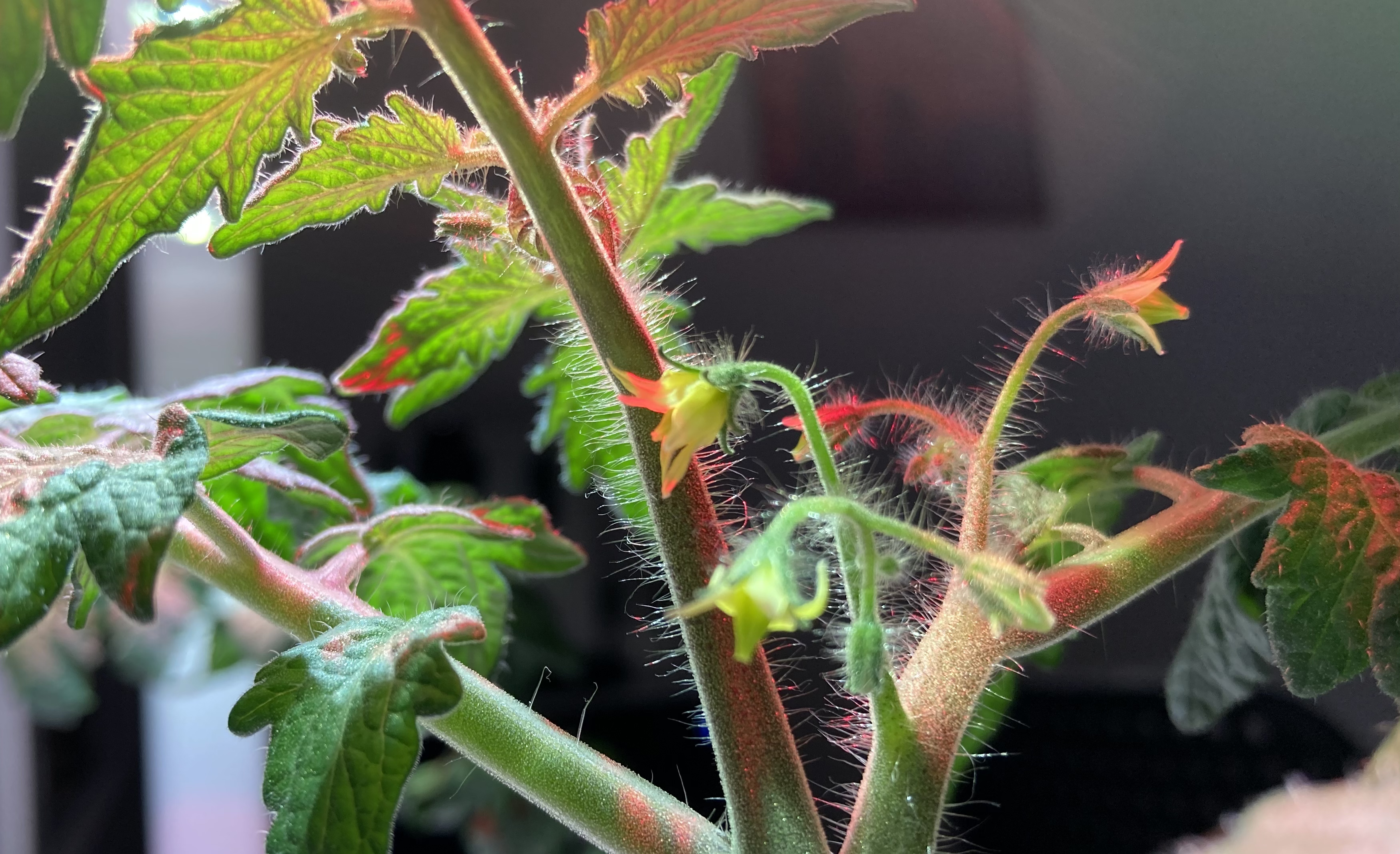Why Do Flowers Have Color?
I recently started a small indoor garden, as a means of giving myself a sense of the passing time. I wanted to look forward to something, to introduce an observable change in the never-ending routine of the working-class life. So I planted a few basils, wild strawberries, and cherry tomato plants, and began to watch them come to life and grow. The sight of lush greenery puts me in a state of trance, as I just stand there and stare at the intricacies, recall how small the seedlings were when I first planted them, and how far they’ve come. But as the days passed, and as the plants matured, I noticed something odd hiding between the thick leafy growth: it was a bright yellow tomato flower. I got excited, it’s finally happening, I will reap the fruits of my harvest!

Well, not so fast; it turns out it would be another couple months before I could pick off one of those fruits. But what followed the excitement was intrigue: why was the flower yellow? What evolutionary path led that tomato plant to synthesize a whole new pigment? Are selective pressures at play, and what advantage does a yellow color, nay, any of the colors in the vast flower kingdom, have over the default green?
My first thought: as did the bright yellow flower draw my attention to it, so does it for other creatures, namely pollinators like bees and butterflies. And with pollination comes propagation: the flower blossoms into a fruit, which drops seeds, and those in turn restart the life cycle of the yellow-flowered tomato plant, and that plant prospers. A quick Google search confirmed my suspicion.
But, I felt a lingering sense of inquiry, like my question was only partly answered. Why do pollinators seek bright-colored flowers? After all, those pollinators are living beings too, so they must have evolved that instinct. My reasoning would then be that, for an insect living among rich green vegetation, competing with countless other bugs and animals for food, identifying your food source and getting to it first would be key to your survival. And just like that bright yellow tomato flower drew my attention from beneath the leaves, so would’ve that first plant with a bright-colored flower—and so would’ve that first insect with an innate draw to oddities in its environment been drawn to it.
Curiosity. It is the interest shown by many living beings towards the unfamiliar. It is the glue which holds natural life together. Life has evolved to propagate and prosper by exploiting curiosity. Plants rely on the curiosity of pollinators to find their flowers and complete their life cycle, and those pollinators in turn get their food to survive and themselves reproduce, in one never-ending dance of symbiosis.
There are countless examples of how curiosity is the driver of life in the wild. Butterflies and birds, with their dazzling bright colors, find and attract compatible mates within a literal jungle buzzing with life. More grimly, some beings use their predators’ curiosity against them, possibly to protect their own kind by thinning out those higher on the food chain. More specifically, it is not uncommon to find bright-colored frogs and crawlers with poisonous properties. If one unlucky predator feels drawn to their colors, the prey takes the fall, and brings the predator down with it, successfully protecting the rest of its species and ensuring its survival.
One lesson to learn from this is that curiosity is essential for survival. It helps us find food and mates, it drives our exploration and our sense of adventure. But, curiosity alone is not enough, as with the case of the glaringly poisonous critters out there. To be curious means to put oneself in the face of the unfamiliar, and this could lead to undesirable consequences. Our ability to think critically is arguably what placed us at the top of the food chain. So, use it wisely, and stay curious.